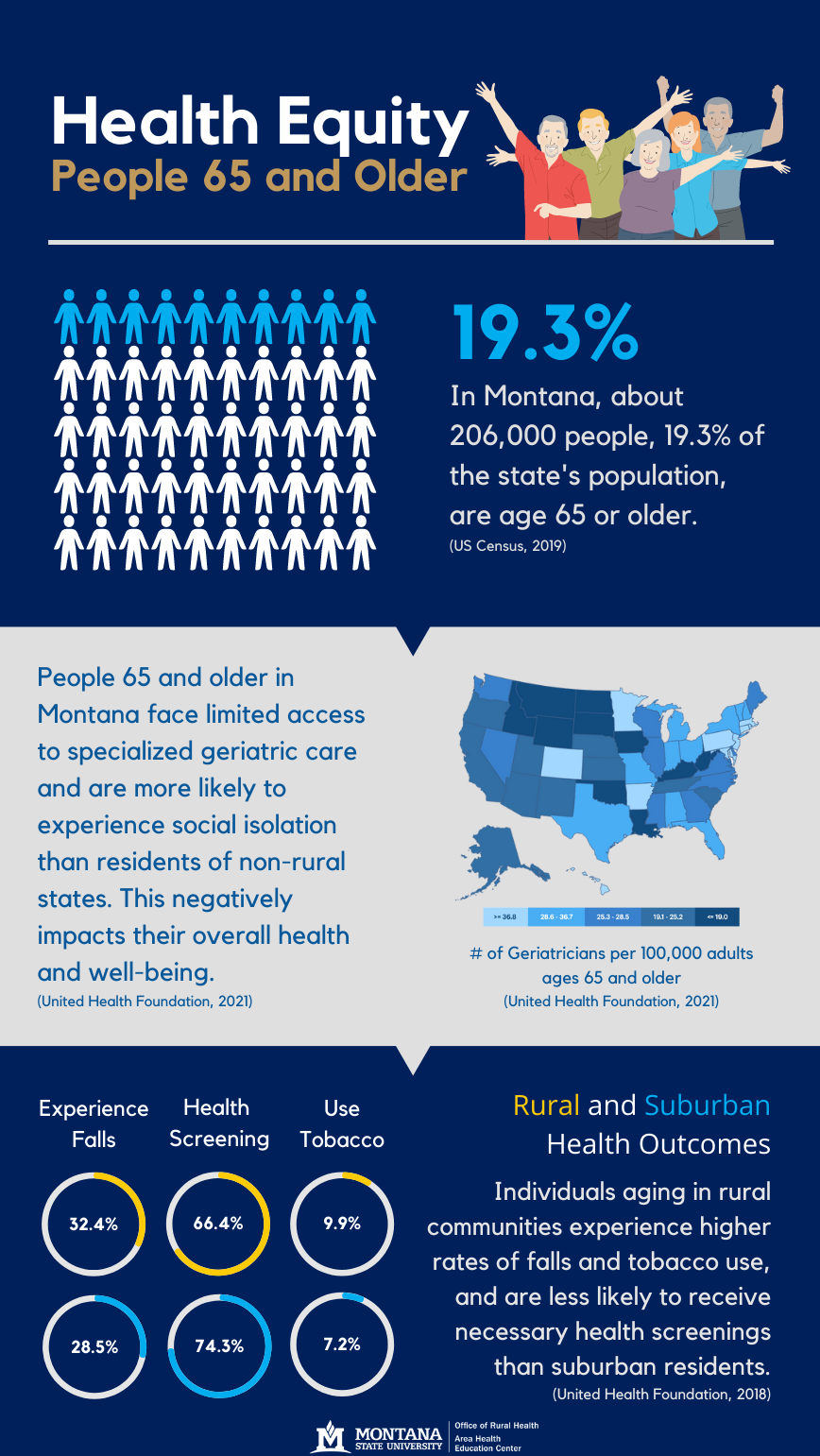Health Equity & Health Disparities
Health equity is a crucial aspect of the COVID-19 Health Equity Grant. This program works to address COVID-19 in Montana and advance health equity through strategies and interventions that address historic and systemic barriers and potentially discriminatory practices that have put certain groups at higher risk of contracting COVID-19 and experiencing severe illness.
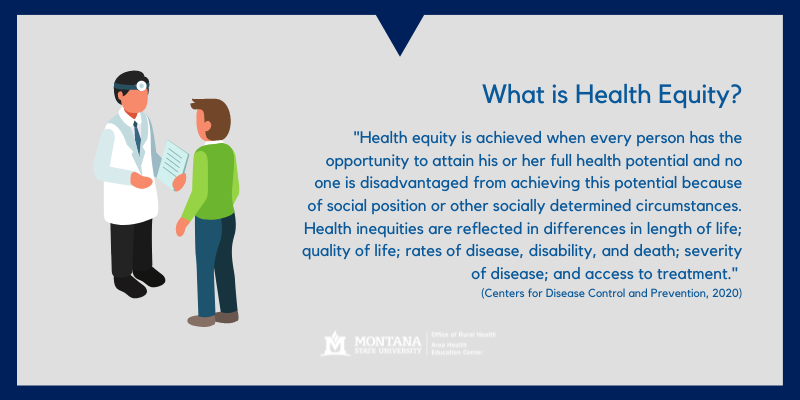
Health Equity Prioritized Groups Identified by the COVID-19 Health Equity Grant
Strategies to Advance Health Equity
- Community Health Workers and Community Integrated Health Professionals receive on-going training in health equity and social determinants of health.
- Collaboration with Native American Health Professionals to ensure cultural competence.
Statewide Health Equity Taskforce
In order to support the work of the CHEG, MORH/AHEC will convene a Health Equity Task Force with representation from healthcare stakeholder organizations across the state including the Department of Public Health and Human Services, Mountain-Pacific Quality Healthcare Foundation, Rocky Mountain Tribal Leaders Council, and the Montana Public Health Institute.
Additionally, MORH/AHEC seeks representatives and participants from high risk and underserved communities (Montana tribes, disability advocacy groups, LGBTQ+ serving agencies/associations, and others) to share strategies and best practices for improving health equity.
MORH/AHEC has honorariums available to compensate those who share their lived experience with the task force.
Read the Impact Report from the first two year of the Statewide Montana Health Equity Task Force
We welcome additional participation.
Please contact Grace Behrens
Health disparities are preventable differences in health outcomes and disease burdens. These differences often occur along racial and socioeconomic lines and are related to inequality and an unequal distribution of resources. Health disparities are also closely linked to social determinants of health which can account for up to 80% of health outcomes.
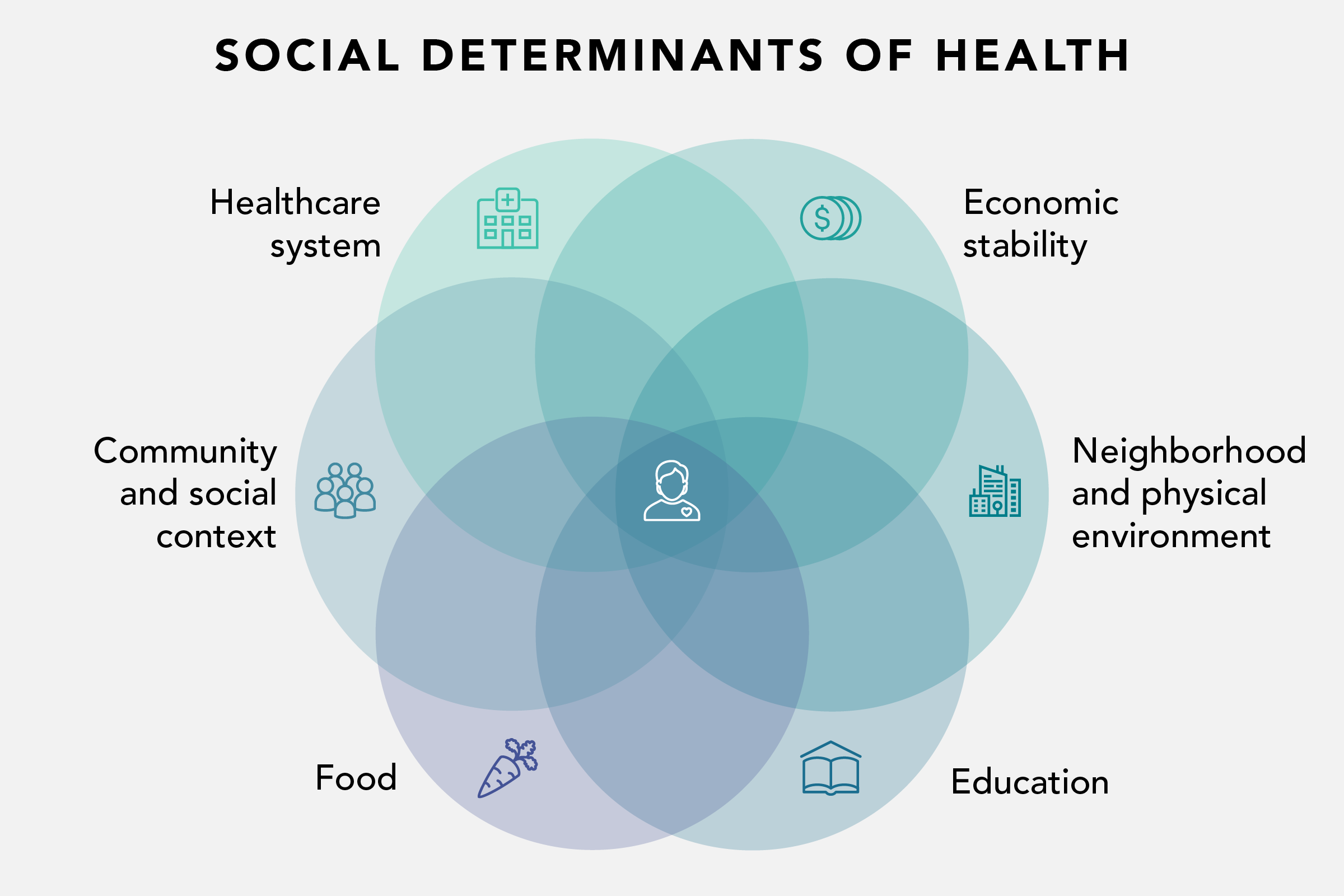
This project is funded (in part or in whole) by grant number 1 NH75OT000080-01 from the Centers for Disease Control and Prevention of the U.S. Department of Health and Human Services and from the Montana Department of Public Health and Human Services. The contents herein do not necessarily reflect the official views and policies of the U.S. Department of Health and Human Services or the Montana Department of Public Health and Human Services.

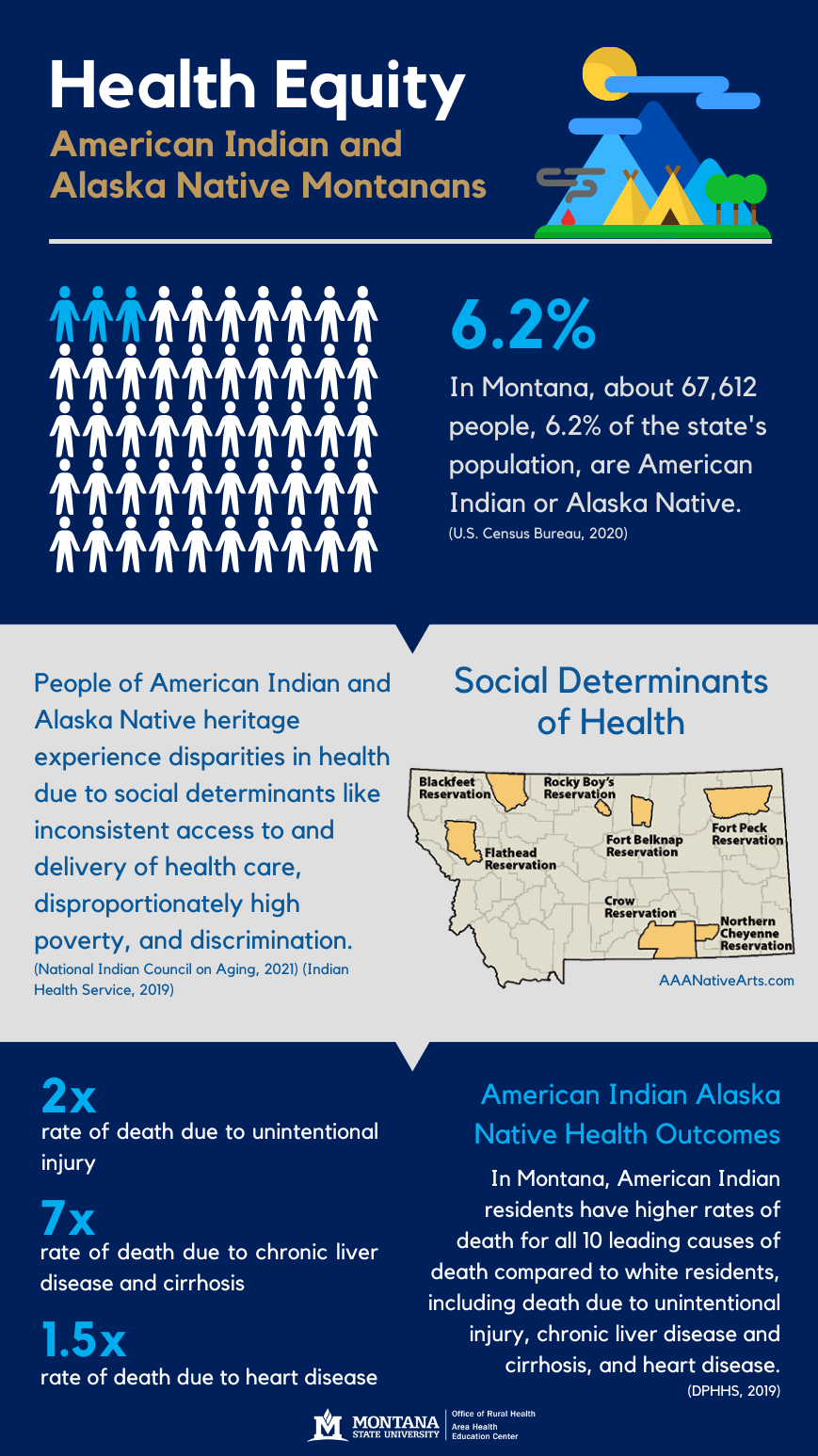
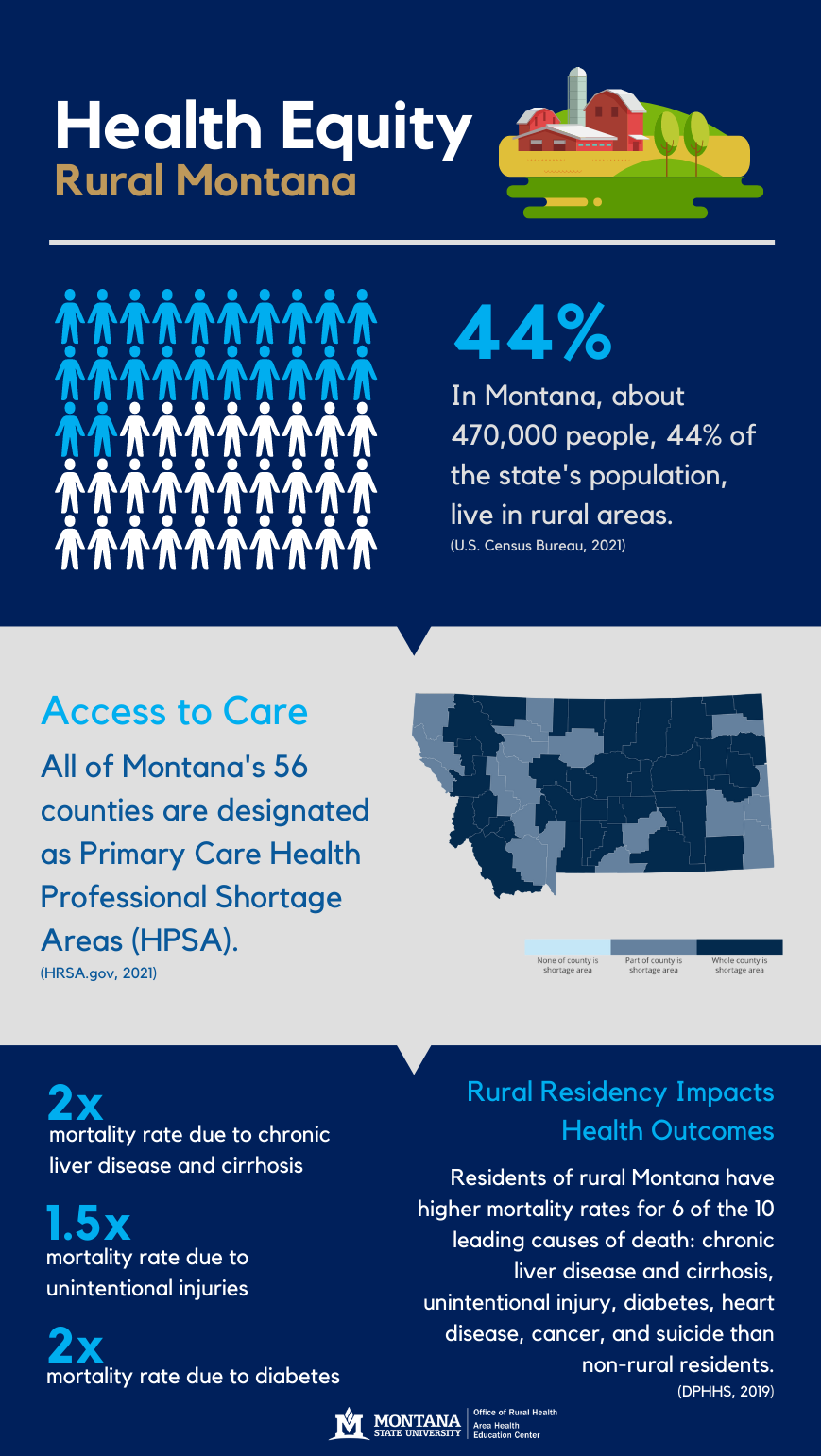
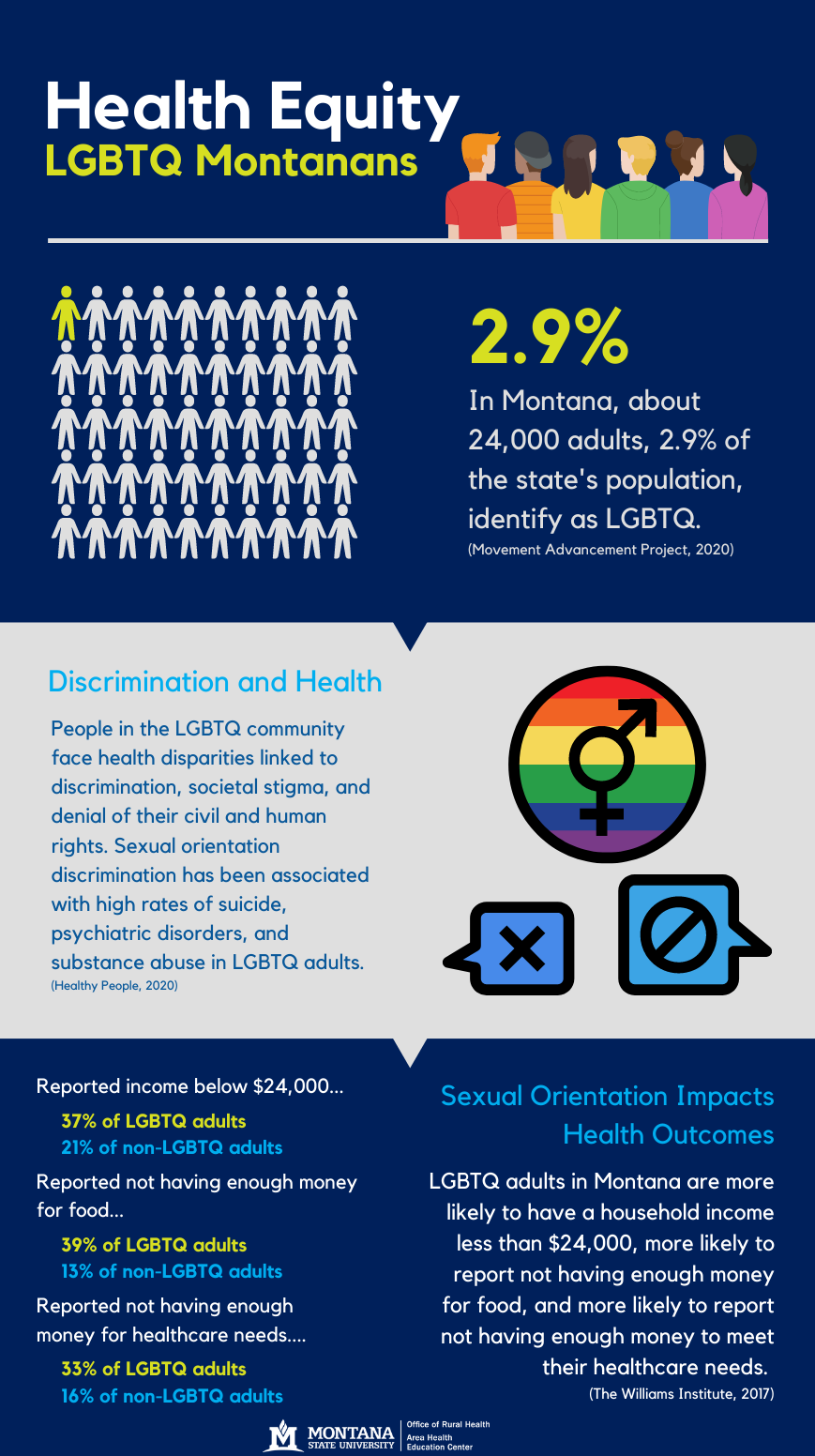
![Health Equity - Montanans Living in Poverty Health Equity - Montanans Living in Poverty. In Montana, In Montana, about 134,605 people, 13.1% of the state's population, are living below the poverty line. (U.S. Census Bureau, 2019). 1 in 8 Montanans live in poverty. Poverty and Race- Poverty can impact groups of people at different rates. American Indian residents make up only 6.3% of the state's population, but 32% of Montanans living in poverty. (U.S. Census Bureau, 2019). 18.8% of people of Multiple races live in poverty, 17.9% of Hispanics, 16.9% of Other, 16.3% of Black, 13.3% of Asian, 11.4% of White, and 4.2% of Islander populations. Living in Poverty Impacts Health Outcomes - Poverty is a complex determinant of health and driver of health inequity. Those living below the federal poverty line are more likely to have conditions like diabetes, stroke, and overall poor health status than those living at 200% of the poverty threshold or greater. Centers For Disease Control and Prevention [CDC], 2018). 1.5x rate of diabetes in adults. 2x rate of stroke in adults. 3x rate of fair or poor health status in adults.](/images/cheg/Health%20Equity_Poverty.png)
![Health Equity - People with Disabilities Health Equity - People with Disabilities. In Montana, about 250,394 adults, 29% of the state's adult population, are living with a disability. (Centers for Disease Control and Prevention [CDC], 2021). Types of Disability - A person who has a disability may struggle with their mobility, cognition, ability to live and care for themselves independently, hearing, or vision. (CDC, 2021). % of Montana adults with functional disability types: 12% wheelchair, 13% cognitive, 7% live independently, 8% care for themselves independently, 5% hearing, 3% visualDisability Status Impacts Health Outcomes - In Montana, having any disability puts you at a greater risk for smoking and having obesity, diabetes, and heart disease. (CDC, 2021). 1.5x rate of obesity in adults. 2x rate of diabetes in adults. 2.5x rate of heart disease in adults.](/images/cheg/Health%20Equity_Disabilities.png)
